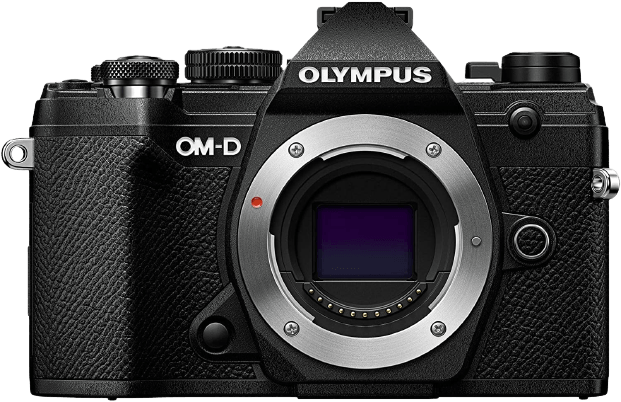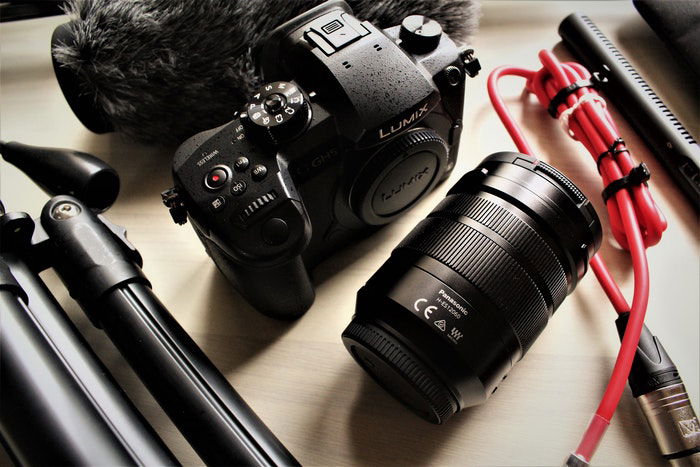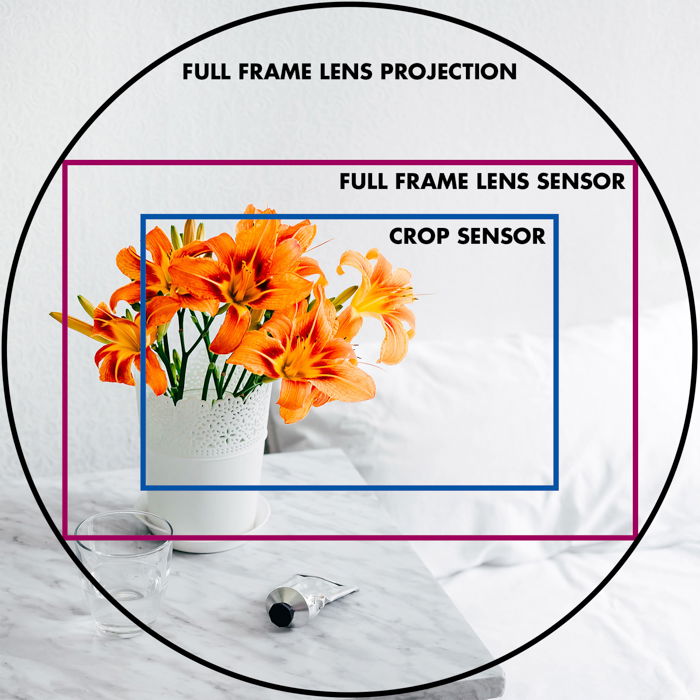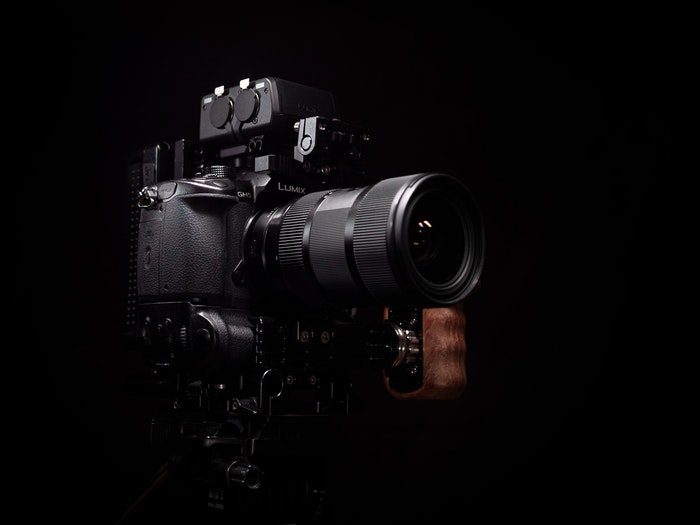The Micro Four Thirds camera system gives photographers a smaller and more compact alternative to full frame DSLRs. In this article, we’ll explain in more detail how and why Micro Four Thirds came to be. We’ll also discuss what the future looks like for this nifty camera system and whether you should include one in your equipment bag. [ExpertPhotography is supported by readers. Product links on ExpertPhotography are referral links. If you use one of these and buy something, we make a little bit of money. Need more info? See how it all works here.]
What Does Micro Four Thirds Mean?
The name Micro Four Thirds (often abbreviated to MFT or M43) relates to the size and shape of the sensor used in all Micro Four Thirds cameras. So, let’s first talk about sensors. At the rear of your digital camera is a sensor that detects and organizes light to create an image. In photography, we often refer to a sensor’s size and how many megapixels it can create. These sizes are standardised, making comparisons between different camera manufacturers a lot easier. Full frame and APS-C are two common sensors that you may already know about.
Full-Frame Sensor
Full frame sensors are modelled on the size of a 35mm film negative. This means that when you’re shooting on a full frame camera, the size of the sensor is 36mm x 24mm. Full frame sensors are usually found in high-end, professional-level DSLRs.
APS-C Sensor
This type of sensor is often referred to as a cropped sensor. An APS-C (or Advanced Photo System type-C) sensor is smaller than a full frame sensor, measuring 23.6mm x 15.7mm. APS-C sensors are found in entry-level and mid-range DSLRs. They are used across different camera manufacturers. Canon also has a smaller version, which measures 22.2mm x 14.8mm.
What Size is a Micro Four Thirds Sensor?
The Micro Four Thirds system uses a Four Thirds sensor, which measures 17.3mm x 13mm. The aspect ratio of this sensor is 4:3, compared to the 3:2 ratio of full frame and APS-C sensors. This is where the MFT system gets its name. Why you may ask, is the sensor this size? Isn’t a bigger sensor always better in photography? Not necessarily. This depends on how you use your camera and what you intend to shoot. Many photographers value ease of use over image quality. This is precisely the niche group that MFT caters to. Back in 2008, Panasonic and Olympus saw a potential gap in the market. The problem? Heavy, bulky and expensive camera gear weighing down photographers. Their solution was to introduce the much smaller Four Thirds sensor to a new system, without a mirror box or pentaprism. And, because there’s no need for a mirror in the Micro Four Thirds system, both camera and lens are far more compact. Problem solved, right? Well, the Micro Four Thirds system isn’t perfect. There are some drawbacks to consider when using a smaller sensor. We’ll explore these now in more detail. One consideration is the crop factor.
What is Crop Factor?
Crop factor is the amount of lens magnification caused by a cropped sensor. In photography, we use this term to help us understand how the size of a cropped sensor will affect the focal length of a full frame lens. To help us understand this, let’s first compare full frame and APS-C sensors.
Full-Frame Sensor Crop Factor
We already know that a full frame sensor is larger than a cropped sensor. So when you attach a full frame lens to a full frame camera, the projection it makes perfectly exposes the sensor, corner to corner. Any more would be overkill, and any less would result in an incomplete image with black edges.
APS-C Sensor Crop Factor
Because an APS-C sensor is smaller than a full frame sensor, it covers a smaller surface area of the projection made by a full frame lens. This difference in coverage is known as the crop factor. The crop factor of an APS-C sensor is 1.5x.
What’s the Crop Factor of a Four Thirds Sensor?
A Four Thirds sensor has a crop factor of 2x. This is because the sensor covers close to half the surface area of a full frame sensor. To put this in context, this would mean that a 300mm full frame lens on an MFT camera body actually has a focal length of 600mm. As a result, MFT systems can be much smaller and more compact than full frame DSLRs. But, crop factor affects not only focal length but also aperture. This means that an f/4 lens on an MFT camera actually has an aperture of f/8.
Are Micro Four Thirds Cameras Any Good?
Whether an MFT camera is good depends on your approach to photography and what you’re shooting. Micro Four Thirds users exchange lower weight, size and equipment cost for a drop in image quality. As mentioned above, the importance of image quality depends upon what you’re shooting and how the image will be published. For most devoted MFT users, this loss in image quality is a small price to pay for having an easier and lighter camera to carry. For travel and outdoor photographers, these characteristics make MFT extremely attractive. To understand these differences better, let’s explore some of the key advantages and disadvantages of MFT.
What Are the Advantages of Micro Four Thirds Cameras?
First, MFT cameras have a greatly reduced flange distance compared to SLRs. This means that camera bodies can be much, much smaller. And because of the 2x crop factor of MFT sensors, lenses are shorter and more compact. Also, in photography, size and weight matter immensely! Every gram and kilogram counts. MFT cameras and lenses are significantly lighter than the equivalent full frame designs. Compared to full frame DSLRs and mirrorless cameras, MFT cameras are considerably cheaper, too. So for those on a budget, you can get more bang for your buck by shopping for MFT cameras and lenses than in the professional, full frame market. With MFT lenses, you’ll also have broad options to choose from. Take your pick from Panasonic, Olympus, Tamron, Sigma, Voigtländer (COSINA), Kowa, and Venus Optics. Finally, MFT cameras are great for video and filmmakers. This is thanks to their small and quick-to-edit file sizes, 4K video capabilities, native live-view, and depth of field.
What Are the Disadvantages of Micro Four Thirds Cameras?
We’ve already mentioned that smaller sensors produce fewer megapixels. So for photographers who need large files to publish in large format, MFT likely won’t meet your image quality standards. The Four Thirds sensor also has limited capability in low-light conditions. This can often result in significant and noticeable noise. Thanks to its 2x crop factor, the Four Thirds sensor has a doubling effect on lens apertures. This results in limited bokeh and reduced depth of field. If you value a shallow depth of field in your shots, MFT may not be the right choice for you. Because MFT cameras don’t have mirrors, you will need to use a digital viewfinder or a live-view camera display to compose your shots. Digital displays are improving but still have lag, which can slow you down. Lastly, MFT cannot compete with full frame cameras in capturing fast-moving objects in focus.
Is There Still a Market for Micro Four Thirds Cameras?
There has been a growing debate over whether MFT will soon become obsolete. The main factor in this debate is the rise of smartphone cameras. But why? One side argues that smartphones will replace the Micro Four Thirds system altogether. This is due to Smartphones’ size, useability, and increasing image quality. In the face of camera smartphones like the Samsung Galaxy S21 Ultra and Huawei Mate 40 Pro, can Micro Four Thirds cameras still hold their ground? The interchangeable-lens market has been shrinking in the Smartphone era. Yet, devoted MFT users still maintain that the system is relevant. This is especially true for vloggers and Youtubers who value the extensive video capabilities of MFT. The jury is still out on whether MFT will survive. Yet, there is strong evidence to suggest that the system may be phased out in the coming years. Olympus recently sold their camera division. But, it’s still too early to say if they will continue to release new products for the Micro Four Thirds system. In recent years, Panasonic has been investing heavily in its full frame R&D department. In 2019, the company made a splash when they introduced the award-winning S1 and S1R. Panasonic has also joined the L-mount squad with Sigma and Leica. Because of this, some argue it is unlikely Pansonic will continue with both the L-mount and MFT mounts.
Conclusion
The Micro Four Thirds debate continues to polarise opinion within the photography community. Voices from each side tout strong evidence for both its survival and demise. Although the digital camera market has certainly changed in the smartphone era, Micro Four Thirds may surprise us yet. Micro Four Thirds is a solid choice for photographers who want to step up from smartphone photography without breaking the bank. For vloggers, YouTubers, filmmakers, and travel and outdoor photographers, MFT still has plenty to offer. Our pick for the best MFT camera on the market goes to the Olympus OM-D E-M1 Mark III. We also like the mighty Lumix GH5 from Panasonic. If you want to learn more about photography and camera types, check out our Photography for Beginners eBook.










